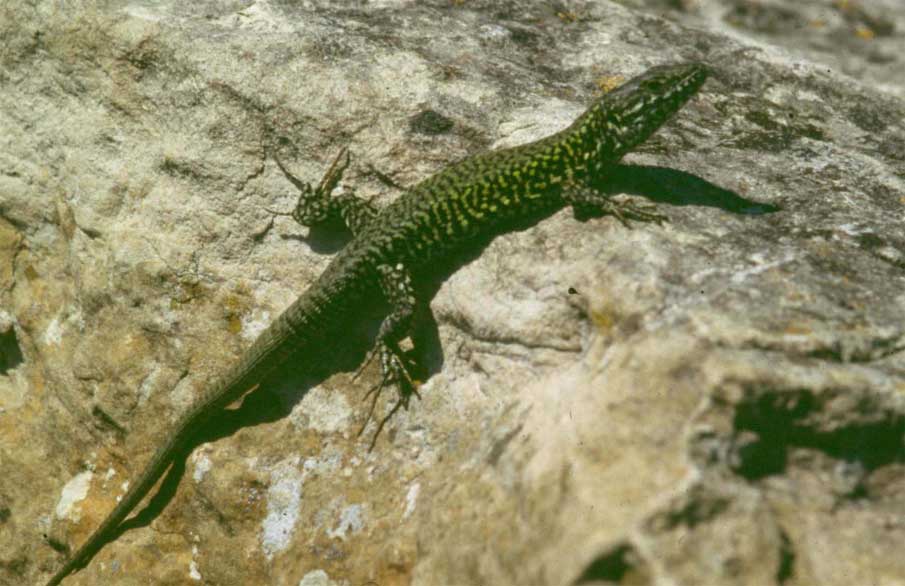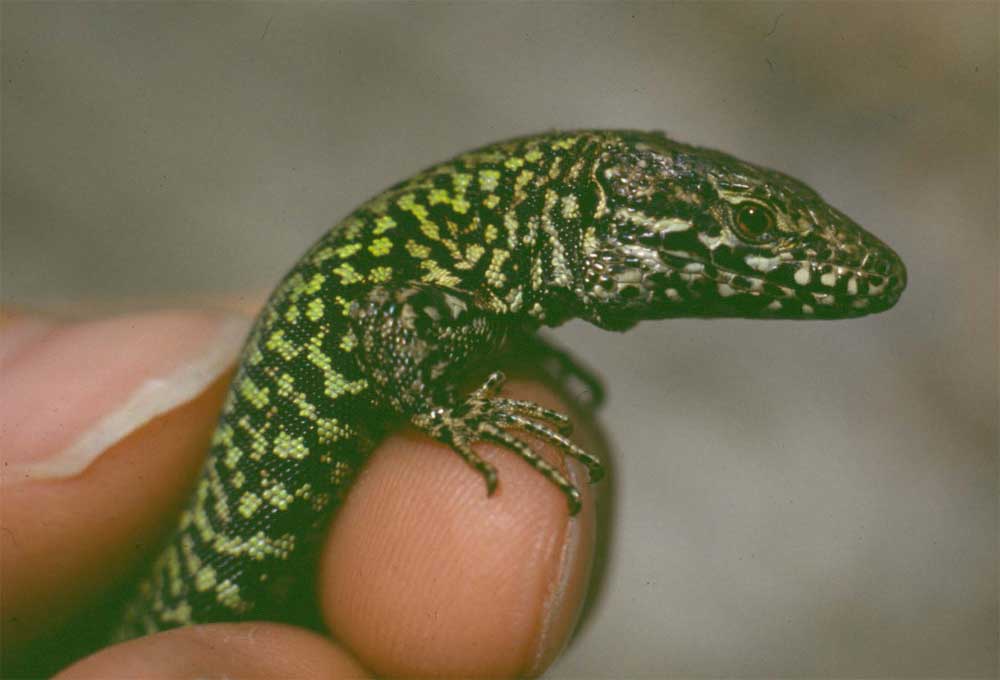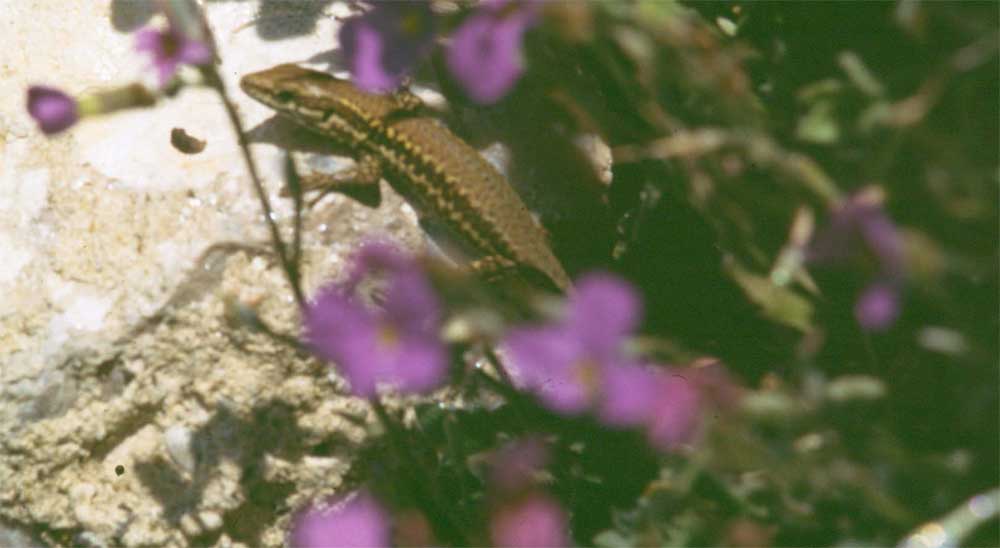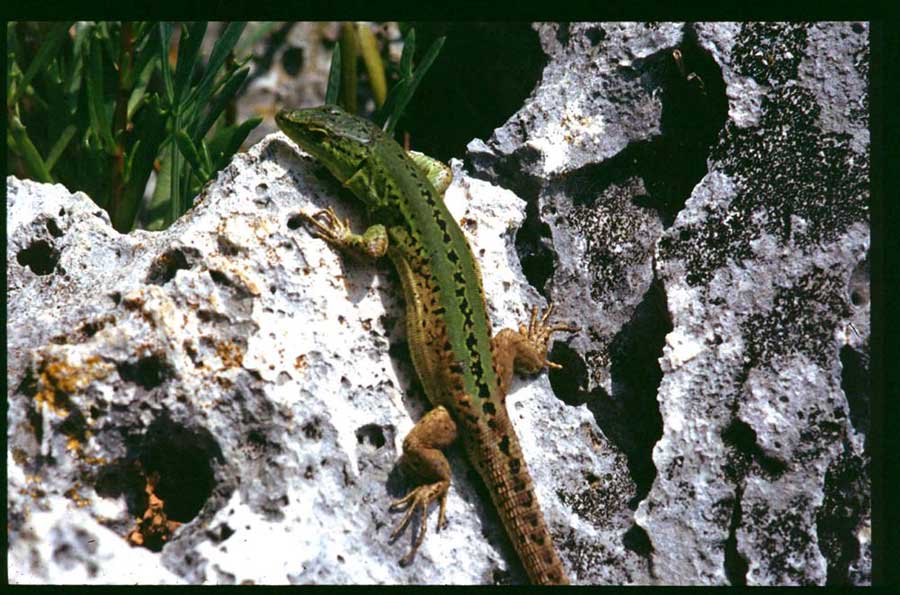 |
 |
Wall Lizards at Ventnor: |
| Author | Message |
|
Chris Newman Member Joined: 25 Feb 2003 No. of posts: 10 View other posts by Chris Newman |
Posted: 08 Apr 2003 On Saturday last we made a trip to the In all about 30 adults were seen in the space of about half to three-quarter of an hour. It would appear that this colony is thriving. Chris |
|
-LAF Senior Member Joined: 03 Apr 2003 No. of posts: 317 View other posts by -LAF |
Posted: 01 Jul 2003 Hmm, I just came across reference to an article in Dec 2000 British Wildlife that suggest the wall lizards at Ventor may be a remnant native population. Is there any information that may support this, or any oppinions on the matter? Many thanks, Lee. Lee Fairclough |
|
David Bird Forum Specialist Joined: 17 Feb 2003 No. of posts: 515 View other posts by David Bird |
Posted: 01 Jul 2003 Lee The paper is on the list of Introduced Species and is by Quayle,A. & Noble,M. The rumour of the relict populations has been going around for a few years seemingly spread by a conservationist that wanted to see some official protection put on the populations that occur on the south coast. I do not believe any of this and all colonies I have looked at or have heard of can be traced back to introductions. The problem is that now it is against the Wildlife and Countryside Act to release them so the persons who are still releasing them do not now publicise the fact unlike in the past when it was often put in some local journal or other. The Ventnor colony has been known for many years and there is a plaque in the car park saying who it was started by and that it was in the 19 th century. They certainly look like the normal Italian form to me, I know some tails were sent to Germany for comparison with the northernmost colonies found in the vinyards and some results appaarently showed that they were possibly related but do not think that any of this was published.I do not think any morphometric studies have ever been made on the whole animals by a competent taxonomist using specimens already in the collection at one of the major museums such as the British Museum (Natural History). We also have to rely on the fact that the German population has not been interfered with in any way with translocations from further south when the numbers were found to be dwindling about 30 years ago. One would expect similarities between southern England and Jersey or North France rather than Germany if these were relict populations. The Isle of Wight had a tradition of introducing reptiles and Amphibians in the 19th & 20th century along the south coast. David British Herpetological Society Librarian and member of B.H.S Conservation Committee. Self employed Herpetological Consultant and Field Worker. |
|
-LAF Senior Member Joined: 03 Apr 2003 No. of posts: 317 View other posts by -LAF |
Posted: 02 Jul 2003 Thanks David, I normally wouldn't have given too much attention such such claims but it is even stated on the HCT website that the origins of some colonies are unknown and that some *may* be native. It doesn't seems likely though, for a lizard that seems to do SO well at some of it's (introduction?) sites one would really expect that an historic population would remain widespread and abundant. Similarly to Podarcis, I have heard there is a bit of uncertainty to the alien nature of some Emys orbicularis populations. To be honest I don't even know of any Emys orbicularis populations in the UK, let alone any that are actually breeding. But then the same assumptions of introduced colonies were made with R. lessonae and we all know what happened there (probably). As far as testing for legitimacy of UK Podarcis I would have thought that looking for some similarities among UK populations would be a logical first step. Whether morphometrics would be a fully valid method in Podarcis I'm not totally sure... from what I've seen in Anolis, much relative morpholgy can be more closely related to habitat than liniange. However, I'm not sure if Podarcis follow that pattern. Scalation should certainly be robust though and using morphometrics is undoubtedly cheaper and easier than mtDNA bootstrapping, not to mention a lot more accessible! Thanks again for all the info. Hugely helpful. Cheers, Lee. Lee Fairclough |
|
David Bird Forum Specialist Joined: 17 Feb 2003 No. of posts: 515 View other posts by David Bird |
Posted: 04 Oct 2003 Here are a few pics of the Ventnor Wall Lizards Podarcis muralis taken about 5 years ago. 


2 above shots are males and bottom shot female. 
As there was a mention of Podarcis sicula the Ruin Lizard in another thread where there was a possibility that a colony was of this species I have included this pic taken in the Istrian peninsula Croatia to show how different they are from the Wall Lizard British Herpetological Society Librarian and member of B.H.S Conservation Committee. Self employed Herpetological Consultant and Field Worker. |
|
bearde Member Joined: 01 Oct 2004 No. of posts: 2 View other posts by bearde |
Posted: 01 Oct 2004 hi i was wondering does any 1 no wall lizard care of Podarcis muralis pls |
|
Vicar Senior Member Joined: 02 Sep 2004 No. of posts: 1181 View other posts by Vicar |
Posted: 01 Oct 2004 Anybody compared the Ventnor colony to the Farnham colony ? Are they even the same species ? I asked the English Heritage chap and some of the Castle Gardeners about the Farnham Castle colony, nobody had ever seen a Lizard ! I really should have wandered about the castle more, earlier in the year...especially as its only 10 minutes walk from my house ! (cough), but I was tramping heaths at Frensham and Hankley :P I've read somewhere that Podarcis are more active than our natives over the Winter months ? Is this so ? If so I'll wander down on some warmer days over the next month or 2. Steve Langham - Chairman 
Surrey Amphibian & Reptile Group (SARG). |
|
Vicar Senior Member Joined: 02 Sep 2004 No. of posts: 1181 View other posts by Vicar |
Posted: 17 Apr 2005 Finally got an excuse to wander down to Ventnor this weekend, was pretty late in the day when we got there, but managed a few snaps. Hopefully pics are good enough for somebody with more expertise than I to identify the race ?
Steve Langham - Chairman 
Surrey Amphibian & Reptile Group (SARG). |
|
Vicar Senior Member Joined: 02 Sep 2004 No. of posts: 1181 View other posts by Vicar |
Posted: 14 Apr 2006 Managed another trip to Ventnor this over the last couple of days, and might be there again this May. Attached are some pics. Can the sub-species be identified?, or what measures would be required to make a positive ID ?
Oh, and they bite !
Steve Langham - Chairman 
Surrey Amphibian & Reptile Group (SARG). |
|
arvensis Senior Member Joined: 15 Mar 2006 No. of posts: 445 View other posts by arvensis |
Posted: 14 Apr 2006 I may go up and look at the Farnham colony.. If I can find out exactly where they are. Mark Hampshire Amphibian and Reptile Group. |
|
Vicar Senior Member Joined: 02 Sep 2004 No. of posts: 1181 View other posts by Vicar |
Posted: 14 Apr 2006 Mark, None left at the castle, I've asked EH staff and the gardeners and looked myself. Only hope is that they are in one of the local walled gardens, I'll do a mailshot one of these days, as I live 10 minutes walk from the castle :P Steve Langham - Chairman 
Surrey Amphibian & Reptile Group (SARG). |
|
lucym Member Joined: 22 Feb 2006 No. of posts: 31 View other posts by lucym |
Posted: 15 Apr 2006 Hi Steve, glad to see you got some results on your travels, love the pics especially the one attached to your finger!  |
|
arvensis Senior Member Joined: 15 Mar 2006 No. of posts: 445 View other posts by arvensis |
Posted: 15 Apr 2006 Thanks for info Steve, shame that they're not there as it would've been worth a look. The plan was to do some herping in the east of Hampshire then nip over to look for these. I may have to take the boat over to the Isle of Wight and see them there.
Mark Hampshire Amphibian and Reptile Group. |
|
Vicar Senior Member Joined: 02 Sep 2004 No. of posts: 1181 View other posts by Vicar |
Posted: 17 Apr 2006 Its certainly not necessary to catch the Wight ferry to see Wall lizards, plenty on the Bournemouth cliffs this afternoon. I guess this is why they're called 'Wall lizards'
OK some weren't on walls
Steve Langham - Chairman 
Surrey Amphibian & Reptile Group (SARG). |
|
arvensis Senior Member Joined: 15 Mar 2006 No. of posts: 445 View other posts by arvensis |
Posted: 18 Apr 2006 Nice piccys again Steve, I'm sure they'll run away as soon as the see me  . Actually, Prattus Major(me) has lost my car + petrol cap keys so I won't be going far for a while. . Actually, Prattus Major(me) has lost my car + petrol cap keys so I won't be going far for a while.Mark Hampshire Amphibian and Reptile Group. |
|
Iowarth Admin Group Joined: 12 Apr 2004 No. of posts: 222 View other posts by Iowarth |
Posted: 18 Apr 2006 With reference to the introduced Wall Lizards identification of sub-species is tricky. But a significant proportion from Bournemouth, Ventnor and Shoreham have the intense green colouration together with extensive black marking, particularly on the underside, of nigriventris. Conversely, a significant proportion of individuals appear quite typical northern animals! It is, of course, entirely possible, since some of these known introductions are quite longstanding that they have evolved into a "UK" race. A combination of genetics, trace minerals in soil etc and natural selection (ie best camouflage) would see to this. (as evidenced by local variation in Sand Lizard colonies in the UK). So far as potential native status is concerned the only factors that really support this are the one or two colonies of unknown origin plus the fact that in the south of England they do extremely well - apparently ideally adapted to our climate. Conversely, so far as I am aware, there is no fossil record (unlike the Pool Frog and Emys) and their distribution in Europe does note readily lend itself to access to the Uk by the "normal" route across to East Anglia. But it would be a braver man than I to rule it out completely! Finally, someone mentioned their behaviour in winter. I normally describe this as " they only have a loose grasp on the concept of hibernation". I think, simply, because they hibernate in rock/wall crevices rather than deep within burrows or vegetation, they are better able to detect the warmth of the sun - which against a wall can be quite considerable even in the depth of winter. Certainly, taking into account a combination of wild and captive colonies, I have seen both these and Podarcis sicula up and basking on every day in the calendar year at some time or the other over the last ten years. Chris Davis, Site Administrator Co-ordinator, Sand Lizard Captive Breeding Programme |
- Wall Lizards at Ventnor |